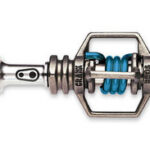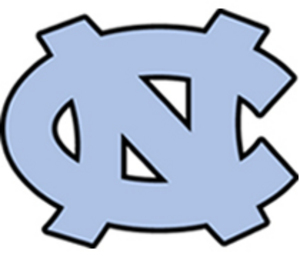When the great Louie Bellson first used two bass drums on his Gretsch set in the 1950’s, he revolutionized drumming forever! His pioneering double-bass chops with the Duke Ellington Orchestra always brought down the house. However, this has presented a problem for the average joe who digs the double-bass thing: Who the hell has the room for another huge bass drum in their average-joe house? What working-class drummer can readily afford a second bass drum for that matter? Well, the genius who invented the double-bass pedal has solved that problem very effectively!
As space-saving as they may be, double-bass pedals are ALSO rather expensive. costing anywhere from $250.00 to almost a grand (which is about 3 times as much as I have in my entire kit)! Fortunately, Pacific Drums, the “budget-line” of DW, has a double-bass pedal on the market that performs pretty good and is very affordable.
These aren’t cheaply-made pedals, either (they ARE made by DW, after all)! Their long steel pedals (hinged at the heel) are solid and stable. The primary pedal is held securely to the bass drum hoop with a claw-style clamp that is adjusted by a threaded key. The secondary pedal is mounted on a wide, solid steel plate, and linked to the beater assembly by an adjustable telescoping drive shaft with a universal joint at each end to ensure smooth power transfer with each stroke.
The spring tension of each pedal is fully adjustable (I like ’em fast and loose, myself), and both pedals have built-in spurs to prevent pedal creep. These spurs are adjustable with a drum key, forming a positive, tight grip to any plush surface. It does bear mentioning that these spurs will damage hard surfaces, such as hardwood and linoleum floors, so a smart drummer will set his kit up on a mat or piece of carpet.
The beater assembly is a chain-drive type (for smoother, quiet, fast operation), with dual offset cams to help throw the pedal faster then the foot drops it. The haxagonal design of the telescopic drive shaft totally eliminates slippage, and the two locking lugs help keep the length adjusted through even the longest sessions.
The beaters themselves are my favorite part of this pedal. The have two-sided oval, hard-rubber heads mounted on very thin, strong steel rods. Each beater head can be turned to the hard rubber side for more attack, or the softer felt side for more traditional marching-bass sounds. The both lock into their beater holders with two lug locks for added strength.
Overall, I like this pedal alot. It performs very well with very fast fills, ruffs, and buffalo rolls on the bass drum. The response is about average, and the rebound is superb, even with the spring tension set very loose.
Conversely, the Pacific Drums DP402 does have limitations. First off, unlike it’s higher-priced brethren (most notably the Tama Iron Cobra), the beaters are perfectly straight rather than offset. This coupled with the rather large distance of the beater assembly from the bass drum’s batter head means the beater has to travel farther to meet the head, thereby requiring greater effort to play each stroke.
I solve this problem by raising the beaters up to their maximum height. While a longer beater shaft meets the drum head earlier, they do not strike the drum head in the center like they should (which presents a problem for drummers like myself who currently play a 20″ bass drum). Although the drum will still sound pretty good, the power of the drum is severely curtailed when it is not struck in dead center.
The other problem is that the cams, though offset, are smaller than they should be, and cannot be changed (like Pearl’s Power Shifter pedals). A larger cam means a faster pedal, because they require less foot effort to throw the beater hard and fast into the head. DW’s superb 5000 series pedals are a great example of this; just a little tap of the toe sends the beater slamming mightily into the head, producing a thunderous boom with very little effort.
As far as the other players are concerned, some love it, and some hate it. Seasoned double-bass players complain that it is too slow, and the beaters smack their shins when they rebound (though this has never been a problem for me). There are better pedals out there, to be sure, but they’re also way more expensive, and other pedals in the price range of the DP402 are put near unplayable!
The DP 402 ranges in price from $99.00 to $235.99. Musician’s Friend has probably got the best price going right now. I say, for a novice to intermediate drummer, these pedals are definitely worth every penny. They’d be much faster, stronger pedals with the addition of offset beaters and larger cams, but they’d also probably be more expensive as well. If that’s a problem, it would behoove you to save another couple hundred dollars and buy a Power Shifter or Iron Cobra instead, but they’re good enough double-bass pedals for me!




